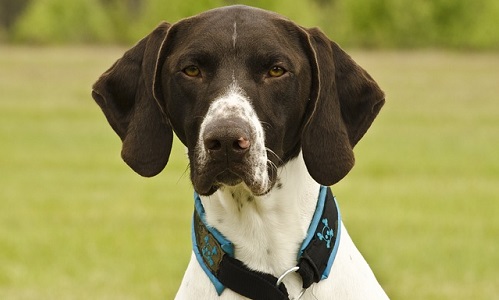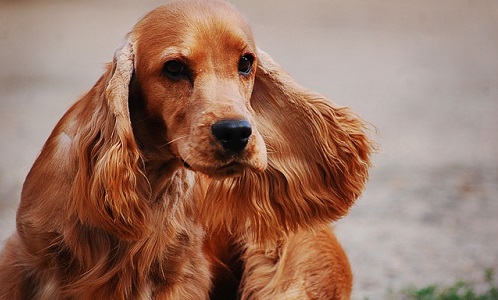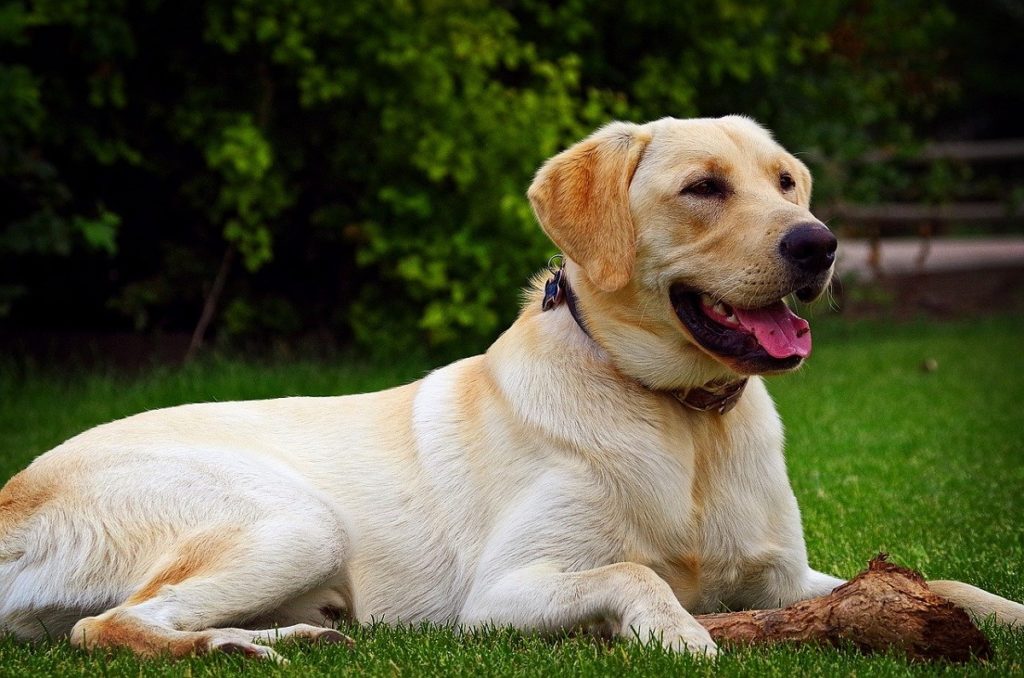Sporting dog breeds were once synonymous with hunting, but today the term offers a heavier nod to ability than active function. The same canine traits that once put dinner on the table have been well adapted for breeding a steadfast companion, or a dog capable of “hunting” first place on an agility course.
The American Kennel Club, or AKC, divides sporting dogs into a quartet of classes: Retrievers, Setters, Pointers, and Spaniels. Each class of sporting dog has its own advantages “in the field,” having been bred for specific tasks alongside their human keepers.
Sporting Dogs: The Retrievers
There are six distinct breeds within this sporting dog group, including the most popular breed in the United States, the Labrador Retriever. Bred to safely find and carry game over long distances, all breeds in the group have the characteristic “soft mouth” trait, which allows them to carry game without damaging it with a strong bite.
- Chesapeake Bay Retriever: His wavy coat offers immediate appeal, and his natural retrieving instincts make the Chesapeake Bay Retriever a prime hunting companion. Descended from two dogs rescued from an 1807 shipwreck off the eastern coast of the United States, this brown-hued charmer is well-liked for both his eye-catching coat and kindly nature.
- Curly-Coated Retriever: The Curly-Coated Retriever may like belly rubs and head pats as much as the next dog, but unlike many of the other retriever breeds, he isn’t insistent on them. Strong and independent, the fleece-like coat that gives this breed its name doesn’t shed as profusely as others, and modern dog geneticists attribute that quality to poodles mixed into the breed line early in its inception.
- Flat-Coated Retriever: The Flat-Coated Retriever may resemble a Labrador at a glance, but a closer look reveals a longer head and muzzle, as well as beautiful feathering of the fur around the legs and ears. Naturally sleek, the Flat-Coated Retriever has a playful and puppy-like demeanor, and his feathery tail will be spotted wagging more often than not.
- Golden Retriever: The third most popular dog breed in the US after Labrador Retrievers and German Shepherds, the Golden Retriever is a nearly perfect intersection of enviable canine traits. A long, lustrous yellow coat, fierce loyalty, adaptability to training, and inherent intelligence combine to make him an ideal companion for individuals, families, and virtually any living situation.
- Labrador Retriever: The Labrador Retriever gets his name from the area in which the breed started, the Labrador region located in Northwest Canada. While their first historical job was hopping happily into the water to retrieve fish and nets for their human keepers, today they occupy a staggering range of professions, including a heavy presence in security, search-and-rescue, and drug-detecting police work. Their large, webbed paws give them superior control and movement when in the water, and they’re typically all too eager to explore while visiting rivers, lakes, and on beachside excursions.
- Nova Scotia Duck Tolling Retriever: While most retrievers were bred to bring back the prey itself, the Nova Scotia Duck Tolling Retriever was bred to bring back balls and sticks tossed by their human companions. While this play is important to socialization and development, this “tolling” is also a carefully-calculated repetitive maneuver that attracts curious shorebirds – like ducks – that come closer to see if food is causing all the commotion. The hunter then dispatches the now-in-reach fowl, making keeper and canine a clever hunting duo.
Sporting Dogs: The Setters
The four varieties of setters all share a silky, attractive coat and a slim build; these traits make them sleek and fast – ideal for hunting birds. Setters in particular were bred to hunt airborne prey, and naturally keep their muzzles aloft to catch their scent. Once quarry has been located, a Setter will “set” in place, essentially freezing and indicating to his owner where the prey is. This behavior makes it easy to safely hunt around him, as his fixed position wouldn’t entangle the nets thrown over him, or the guns fired around him.

- English Setter: Arguably the most eye-catching of the Setter group, the English Setter is well-known for generously-feathered fringes of fur along the bottom edge of his body, legs, tail, and along his draped ears. His characteristic speckled/freckled coat is so unique, it even has a breed-specific term: “Belton.”
- Gordon Setter: The Gordon Setter is the darkest of the Setters, typically sporting a black coat with warm brown at the paws, muzzle, “pumpkin seed” spots above the eyes, and occasionally around the chest. He’s also the largest Setter, and can stand as tall as 27 inches at the shoulder. While he still has the characteristic svelte shape of a Setter, he’s also a substantial canine companion and built to traverse challenging terrain.
- Irish Setter: The Irish Setter is the classic breed that most people envision upon hearing the term “Setter.” His long red coat, elegant and slender muzzle and body, and cheerful disposition make him an excellent ambassador for this sporting dog group. While adept at hunting, the Irish Setter also makes a great companion for individuals and families alike, and genuinely enjoys playing fetch with sticks and balls.
- Irish Red and White Setter: The Irish Red and White Setter has many similarities to the Irish Setter, but is primarily differentiated by his shorter, stockier build and his coat, which brings in white and potential freckling/ticking to the Irish Setter’s flashy red hue.
Sporting Dogs: The Pointers
While some Setters and Retrievers are also considered “Pointers” because they exhibit the same behavior while tracking prey, the AKC sporting group contains three distinct Pointer-named breeds, as well as breeds that exhibit the trait in general, such as Weimaraners and Vizlas. These dogs are known for a specific behavior: following prey, “freezing” or setting in place, and lifting their dominant front paw while extending their muzzle forward. The effect is that he is using his body to “point” to the exact spot he sees, scents, or hears prey, allowing his human companion to efficiently flush it out or dispatch it.

- Pointer: Likely the least surprising candidate on the list, the Pointer has made a name for his breed through this specific behavior. The size varies considerably, with a male potentially as tall as 28 inches at his shoulder, while a female may be as petite as 23 inches.
- German Shorthaired Pointer: Notable for his attractive multicolor coat and ticking, The German Shorthaired Pointer is an excellent family dog and enjoys a high level of physical activity. He is very intelligent and capable of working out complex obstacles and often loves spending time in water as much as he does exploring the land beside it.
- German Wirehaired Pointer: His fluffy, shaggy coat, natural “bearded” muzzle, and a resistance to weather mean this German Pointer variant is even more enthused about spending time outdoors. His natural drive to run and explore does not work well with cramped living quarters, so potential families should have a large backyard, a busy physical activity schedule, and plenty of room for him to run around.
Sporting Dogs: The Spaniels
Last, but certainly not least, come the Spaniels: dogs with silky coats, broad muzzles, and drooping ears that have been bred to chase – “flush” – game like quail and pheasant out from beneath covering brush. Tenacious and intelligent, a Spaniel is very likely to have a strong personality and attitude, making him a pleasure to spend time with and, potentially, a bit of a challenge to train.

There are many different types of Spaniels among the 31 breeds inthe AKC sporting group, but some of the more popular breeds are recognizable at a glance:
- Cocker Spaniel: Fans of the Cocker Spaniel dote on their wide, loving eyes and expression, as well as their unusual “crimped” ear fur, a hallmark of the breed. The Cocker Spaniel is very sure of himself and assertive, but a sweet lapdog when his owner takes the time to train him well. He is also the sporting group’s most diminutive member, measuring a petite 14.5 to 15.5 inches at the shoulder.
- English Springer Spaniel: With an elongated muzzle, expressive eyes, and beautiful curly-coated ears, it’s little wonder the English Springer Spaniel has made his appearance in so many historical paintings. His gliding stride is made even more fluid by his long-stranded coat, which will admittedly require a little extra grooming attention from his prospective owners.
- Irish Water Spaniel: With his poodle-like curled coat and unusual naturally-bare “rat” tail, the Irish Water Spaniel is an instantly-recognizable silhouette in the sporting group. His coat offers him protection from both the water and the cold, attributes bred into his line from the hunters and sportsmen that once relied on the breed for performance in chilly regions bordering the North Sea.
- Sussex Spaniel: Roughly the size and shape of his “cousin” the Cocker Spaniel, the Sussex Spaniel sports a beautiful straight coat and ears that hang in a way that almost resembles human hair. His low, powerful build was bred to work exceptionally well in dense cover, necessitating a familiar barking behavior to signal their location to nearby human hunters. Today, the Sussex retains this “chattiness” and is considered one of the more bark-prone members of the Spaniel group.
While sporting breeds of dogs may have been bred to hunt, track, and retrieve prey, they are just as skilled in catching the hearts of the owners that bring them home. Highly intelligent, athletic, and loyal, sharing a modern home with a sporting dog is even more rewarding than coming back home with a brace of pheasants, even if he’s completely capable of helping to hunt them down.
Sources Cited:
1) “Sporting Group.” American Kennel Club (AKC.org), (no publish date), https://www.akc.org/dog-breeds/sporting/page/3/. Accessed November 22, 2019.
2) “Sporting Dog Breeds.” Animal Planet.com, (no publish date), http://www.animalplanet.com/breed-selector/dog-breeds/sporting-dogs.html. Accessed November 22, 2019.
3) “Bird Dog Breeds.” Pheasants Forever.org, (no publish date), https://www.pheasantsforever.org/Hunt/Bird-Dog-Breeds.aspx. November 22, 2019.
4) Moore, Colin; Lynn, Brian. “The Best Hunting Dogs for Retrieving, Pointing, Flushing or Scent.” Outdoor Life.com, June 27, 2019, https://www.outdoorlife.com/best-sporting-dog-breeds/. November 22, 2019.




